QuestionI will be giving quite a bit of detail but I want to give all of the facts I can to find the best way to not only care for his injury but also to prevent such an injury from occurring in the future.
environment:
We have had this snake since November of 2011 and he is very calm and pleasant. He is in a cage by himself. I keep the temperature in his cage between 80 and 85 degrees F and humidity at around 70%. His cage is a 15 gallon aquarium with Aspen Snake bedding, a plastic cave of sorts that he is able to crawl into, a water dish large enough for him to fit his entire body in if he wanted to with about 1/2 of water in it at all times. His heat source is a 35 watt halogen light bulb mounted inside the lid of his tank. http://www.homedepot.com/webapp/wcs/stores/servlet/QuickViewService?storeId=1005
background leading up to his injury:
He was in a 10 gallon tank with Aspen Snake bedding and a solid wood lid with no holes save the one small hole through which the cord for his light fixture exits the tank and this hole is covered on the inside by the light fixture itself. I was heating his cage with a 25 watt blacklight at the top of his cage mounted inside the lid. His eating habits were predictable. He would eat once a week (on Saturday) except when he was shedding/preparing to shed (he would skip eating that week). He would spend most of his time inside his plastic "cave" and would come out in the evenings to drink or just move around his cage. During feedings, I would remove his cave to give him more room to attack and eat and would replace his cave about 10 minutes after he has finished eating.
One week, after a shed, he did not eat (making this two weeks of not eating). He was growing too large for his cave. He literally filled the entire piece when he would be inside of it and even lift part of the cave off the floor of the cage so I purchased a larger cave for him but it would not fit well inside the 10 gallon tank so I waited another week until I could get a larger aquarium for him to live in. He did not eat for the third week. But he still seemed to be active and healthy. He simply was not eating.
We upgraded him to a 15 gallon aquarium and also bought a larger water bowl to account for his larger size. This is where things seemed to go very wrong. At this time it had been almost 4 weeks since he has eaten. He was in his larger cage. I did not, at this time upgrade his heat source because the only wattage upgrade I saw was to 40 watts which seemed too high of a jump for only a 5 gallon volume difference. At this time, the weather was changing and I was holding off on turning on our air conditioner so our home was getting much warmer than it usually did and I fear that for that week, his cage may have gotten too hot. So I turned on the AC and his cage seemed to get too cold. Also, the wood we used for the lid proved to not be completely flat and was leaving large gaps around the edges which I was trying unsuccessfully to correct by placing heavy books on both ends of the lid (we cut the lid to be larger than the tank so that it can never accidentally fall into the tank and hurt him). I was very concerned about the humidity drop in his cage and was rubbing him down with water from my fingertips daily as I waited for my husband to come back into town to cut a new lid (he was out of town for three weeks). During this time the snake still was not eating.
Finally, I could take no more of it and went to the hardware store and bought some padded insulation (like you would use on windows) to help seal the cage and get the humidity back up. This worked. I also adjusted his heat source to the 35 watt hallogen light I mentioned above which got the cage temperature back up to 80-85 degrees. Condensation began once again to appear on the walls of the cage near the water bowl and the environment looked stable. But the snake still would not eat.
Before he had stopped eating, he was eating small rats (one small rat a week). This was what he was eating for about 3 or 4 weeks before he stopped eating. Prior to that, he was eating two mice per week. Because he would no longer eat the rat I tried offering him a mouse. He would not eat the mouse either. I was so concerned about him not eating (going on close to 3 months as of today) that I left a mouse in his cage during the day but closely monitored to make sure the mouse did not attack the snake. The snake would not come out of his cave while the mouse was in there not even in the evenings when he would sometimes come out and move around. But even prior to leaving the mouse in his cage, he was coming out of his cave less frequently. When I would take him out of his cage and hold him, he would still move and explore. He seemed aware and appeared healthy although significantly lighter in weight.
The snake shed again, inside his cave (this was about a week and a half after I had gotten his environment stabilized with the temperature and humidity). When he shed, he had a large gash across part of his body where he had ripped off skin. Some skin would still be there along the gash but it would be shredded and you could see his pink (I assume muscle). This happened during one of the days I had the mouse in his cage but the mouse had not been near him.
I removed the mouse and cleaned out his cage, replacing all of the bedding and thoroughly washing his water dish and the side of the cage (I did not use any soap, just clean white cloths). I lined his cage with paper towels for the first day but he did not seem to like the papertowels so on the second day I put the Aspen bedding back in his cage. I applied neosporin to his wound and have not tried to feed him again as I cannot see how he could bear to kill his food with the open wound.
It has been about a week now and while his wound is scabbing, he is still pulling at the bits of shredded flesh left on his body. When he moves, the scabs break apart and you can see what looks like trace amounts of blood (nothing is "bleeding out" but the pink flesh will appear to have a hint of red in it that looks like it might be blood around where the scab has broken apart with his movement). The bedding keeps getting into his wound and I pull it out daily. I am not sure if I should go back to the paper towel bedding (or perhaps some other bedding) until he heals more or if he is over the worst of it and will be fine in his current bedding.
He still moves and explores when I take him out of his cage. He still seems alert and strong (when he grips my arm and hand as he moves). My main concern is that it has been almost three months since he has eaten and with his wound I am not sure when he will be able to eat again. I do not want to wait until he is too weak to eat. I do not want to see him suffer. I have never had a snake before (aside from garter snakes that my children caught and their personalities are entirely different from a ball python) and I love him very much. There are no vets in our area who seem to know anything about snakes and the reptile store where I bought him does not seem concerned about him saying that snakes are very resilient and can come back from much worse than this and even saying that snakes can go for a very long time without eating. While this may all be true, this is not just "some snake in the wild", this is my snake and I don't want to rest on the opinion of others who do not care for my snake as I do without getting some second opinions.
AnswerJulie,
Thank you for all the info. A BP can go roughly 1 month without food for every foot it is long. BPs can go a bit longer because of their bulk. You have tried almost everything an expert would, so I have little to offer you. Get rid of the aspen for good. Use towels as substrate and coconut bark or cypress (cypress is cheaper) once he recovers. Keep trying to feed him, go as far as to buy an appropriate sized gerbil, hamster, chick, etc. Anything to spur his appetite. The absolute best advice I can give you is to find a good exotics vet, even if it is a 50 mile drive. The snake could have a bacterial infection keeping it from eating. If that is the case, without help and treatment, the snake will indeed die.

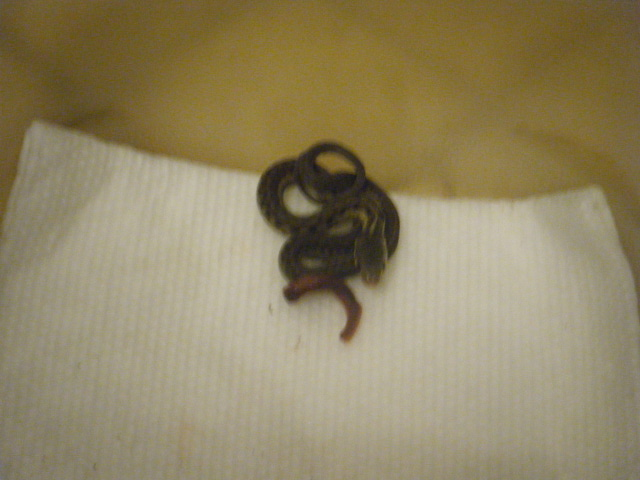 Garter Snake vs. Blue Racer
Question
Baby snake Baby snake
My son and
Garter Snake vs. Blue Racer
Question
Baby snake Baby snake
My son and
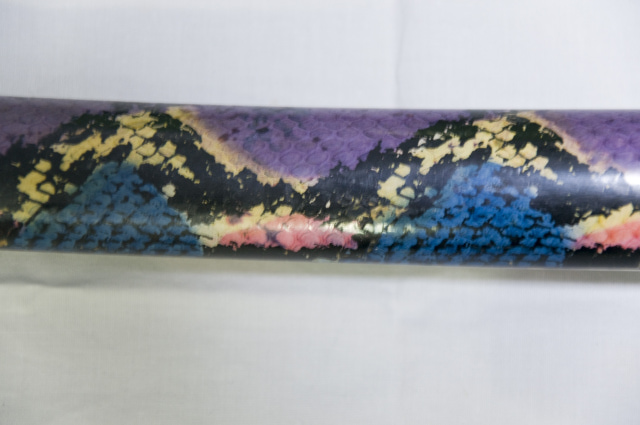 snake skin identification
Questionsword 2
sword 1
QUESTION: I have
snake skin identification
Questionsword 2
sword 1
QUESTION: I have
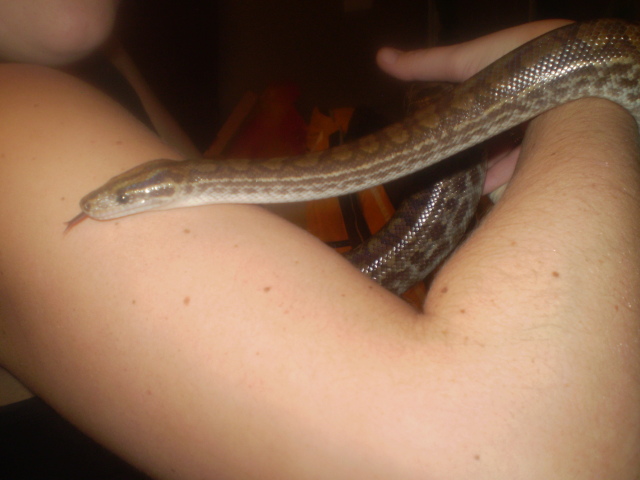 My pet snake
QuestionMatilda
QUESTION: Hi, I recently inherit
My pet snake
QuestionMatilda
QUESTION: Hi, I recently inherit
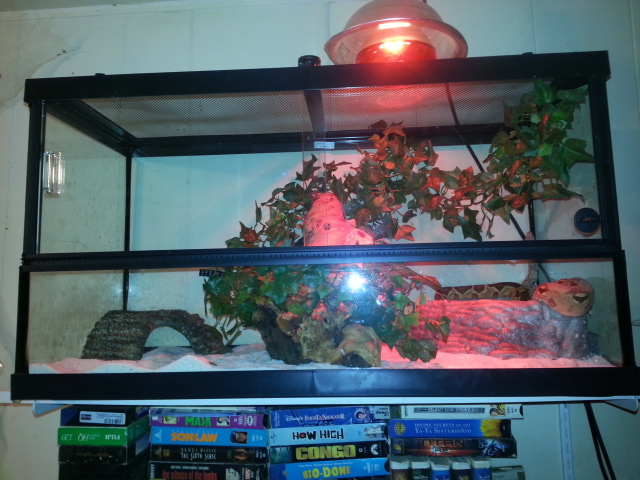 my snake
Question
cage snake
I recently bought a sn
my snake
Question
cage snake
I recently bought a sn
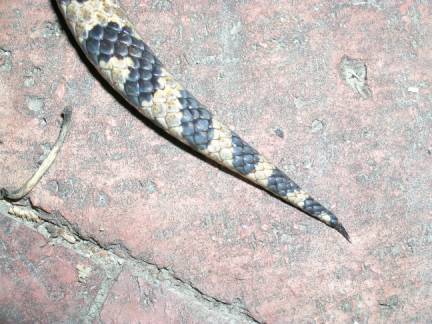 Suriname BCC Shed
QuestionQUESTION: I recently Rescued a Surinam BCC Boa,
Suriname BCC Shed
QuestionQUESTION: I recently Rescued a Surinam BCC Boa,